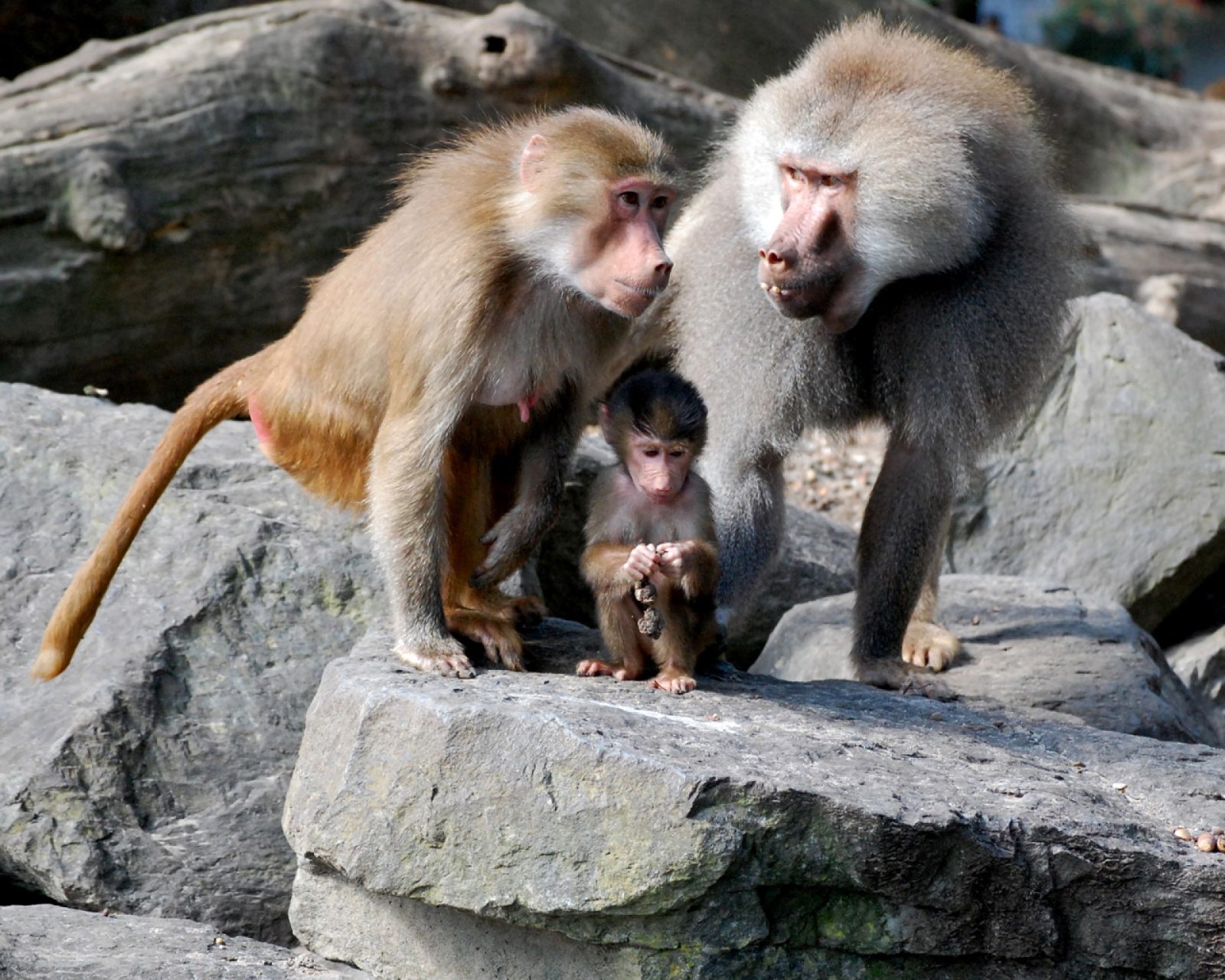
Hamadryas Baboon
The Hamadryas baboon is a species of baboon within the old world monkey family. It is found in the extreme north of the continent – in the horn of Africa and the southwest part of the Arabian Peninsula. There are far fewer predators than elsewhere in Africa, leading to less effort needing to go into avoiding them. In ancient Egypt, this species was sacred, however, that has not stopped it becoming extinct in the country (One of the Egyptian gods was a baboon).
Adult males are around twice the size of adult females, but also males develop a silvery mantle around their neck, which females do not have. Males grow to 80cm long and 20-30kg, while females grow to 45cm at most and 10-15kg.
It lives in arid areas savannas and rocky areas, though it also needs cliffs for sleeping and finding water. it is omnivorous and ready to take advantage of most opportunities which it encounters. It diet depends on the season, with the wet season bringing blossoms, seeds, grasses, wild roots as well as bark and leaves from the acacia tree, while during the dry season they eat leaves of other plants. They will also eat insects, spiders, worms, scorpions, reptiles, birds and even small mammals such as antelope. Water also effects their behaviour; during the wet season it is easy to find a watering hole, but during the dry season, they will usually find 3 or so watering holes and keep close to one of them. They are also capable of digging for water (though in close proximity to a normal watering hole.
The social structure is pretty complicated, with 4 levels. Much of their grouping occurs in small one-male groups or harems, with up to 10 females. The males lead and guard this group aggressively. Often a younger male (known as a follower) related to the leader will also be in the group. 2 or even more of these groups regularly group to form clans – though generally, these are formed between clans with closely related males. Bands are the next level, where 2-4 clans will join, leading to groups of up to 400, which travel and sleep as a group. Males rarely leave this band, though females sometimes do (or are traded. Bands will fight each other over food and/or territory. Solitary males that have no connection to a harem are allowed within the band. Several bands may sometimes come together to form a troop, especially for sleeping on cliffs.
It is a strictly patriarchal society, with the males controlling the movement of females, mostly by gestures and faces, though ready with violence if ignored.
Females which are disliked in their group are more likely to try to leave, or be taken in fights -suggesting a level of choice. Oddly, unlike other primate species, the males aggressively stop any female hierarchy from forming.
One of the biggest threats is loss of habitat, as humans turn land into pasture. Its natural predators include the striped and spotted hyena, as well as the leopard, though humans are greatly reducing that population size over time. Over its entire range, it is considered least concern, though local problems may occur.
Places like the Yangudi Rassa national park (proposed), the Harar wildlife sanctuary and a variety of other reserves all host this animals
We will add any links to content below our news section (this will put together any articles that might have been published on this website for your interest)
